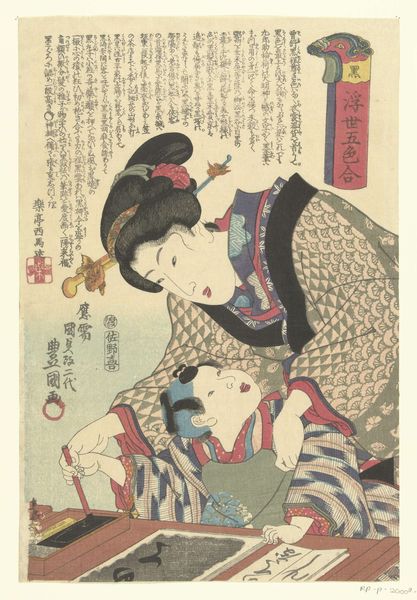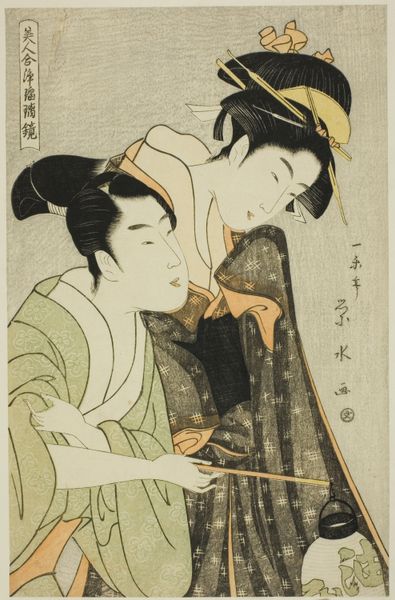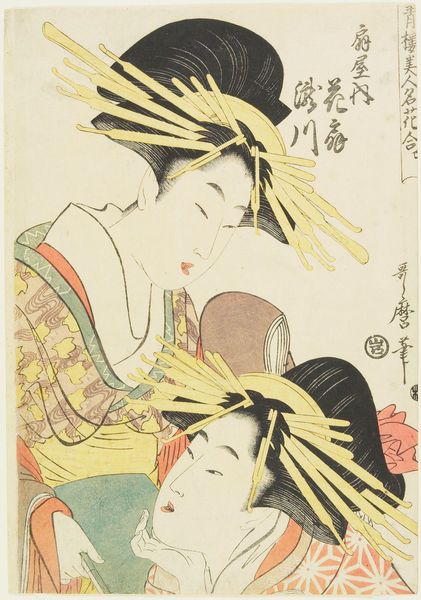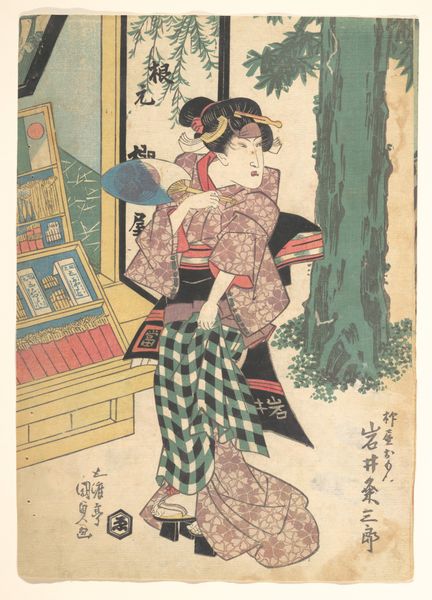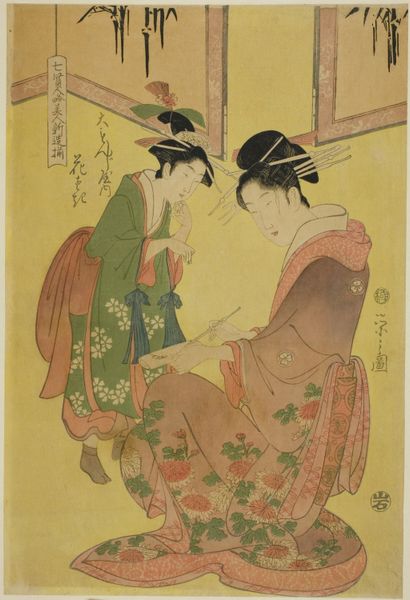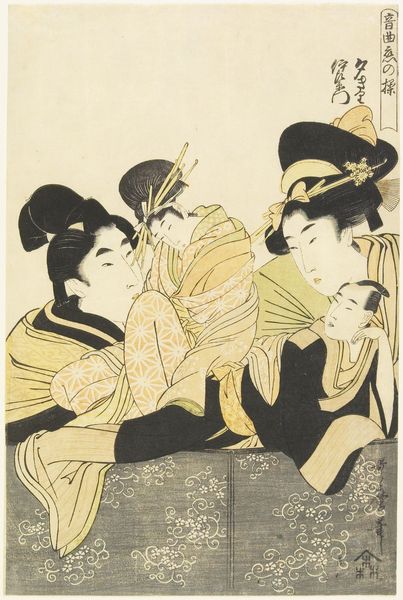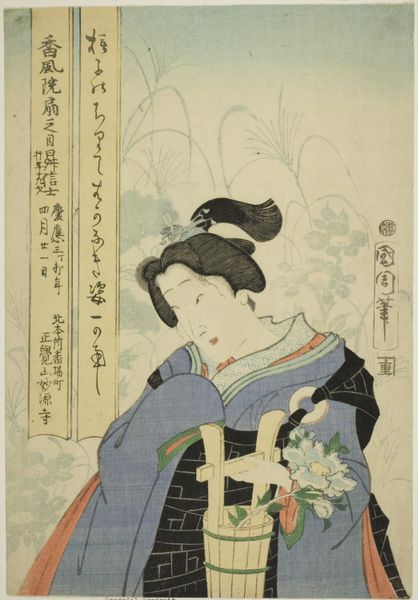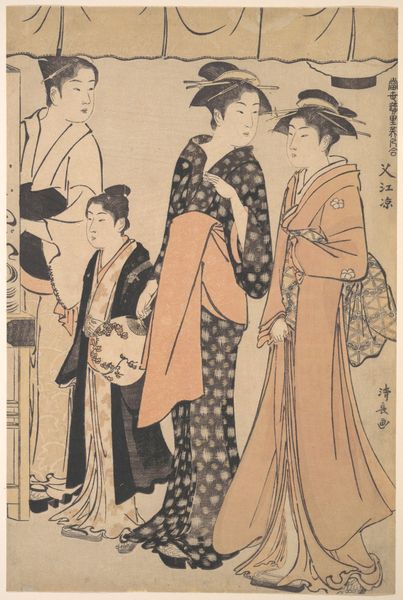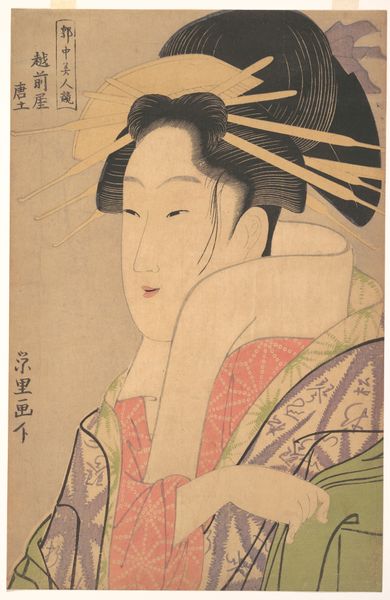
print, woodblock-print
#
portrait
# print
#
asian-art
#
ukiyo-e
#
figuration
#
woodblock-print
#
genre-painting
Dimensions: height 384 mm, width 252 mm
Copyright: Rijks Museum: Open Domain
Curator: Utamaro’s print, "Geisha's met sumo poppen," likely crafted before 1806, captures a scene of geishas observing sumo dolls. It's a remarkable woodblock print currently housed in the Rijksmuseum. Editor: My first thought is...delightful strangeness! These geishas seem lost in a world both elegant and utterly absurd. Their somber expressions are at odds with the almost cartoonish sumo wrestlers perched on tiny platforms. It's a peculiar visual cocktail, isn’t it? Curator: Indeed. The Ukiyo-e tradition, which this print exemplifies, was fascinating. Utamaro wasn't just portraying the upper echelons; he was embedding social commentary through everyday subjects. The material context is key: woodblock prints allowed for mass production and accessibility to a wider audience, making art more democratic. Editor: Absolutely. It's also interesting how the geishas’ intricate hairstyles and the minute details in their kimonos are juxtaposed with the bold lines and flat color of the sumo figures. Is Utamaro drawing a parallel between the artifice of beauty and the raw physicality of sport? One can sense an ambiguous playful friction. Curator: Perhaps. Looking at the production value itself, consider the layers involved in achieving those subtle gradients in the skin tones. Each color represents a separate block, carefully carved and meticulously applied. This reflects considerable workshop skill, often an under acknowledged element in the story of Japanese prints. Editor: The artist captures something quite visceral and fragile. The downward glances of the geishas also strike a chord. There’s a gentle curiosity there but also melancholy and longing. The miniature sumo wrestlers, symbols of power, become almost…pathetic? What stories are whispered among the viewing audience? Curator: I think that duality you pinpoint really highlights Utamaro's mastery. He manages to blend high and low, serious and absurd, in a way that reveals the nuances of his contemporary culture. And viewing the prints today invites us to reassess preconceived notions of craft, art, production and distribution. Editor: Looking at this print, I think I’m seeing beyond the surface. The dolls take center stage, inviting the viewer to explore Japan’s beautiful and enigmatic world. What could the significance of it all be? What possibilities! Thank you for taking me down this interesting path of artistic understanding.
Comments
No comments
Be the first to comment and join the conversation on the ultimate creative platform.





